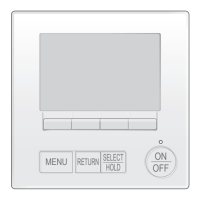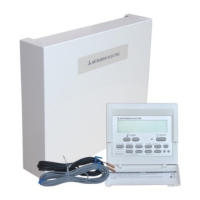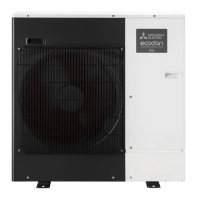Why does my Mitsubishi Electric Heat Pump make hissing or flowing water sounds?
- PpturnerSep 8, 2025
These sounds can occur when refrigerant is flowing within the Mitsubishi Electric Heat Pump or when the refrigerant flow is changing.

Why does my Mitsubishi Electric Heat Pump make hissing or flowing water sounds?
These sounds can occur when refrigerant is flowing within the Mitsubishi Electric Heat Pump or when the refrigerant flow is changing.
Why does the airflow direction change on my Mitsubishi Electric PLA-A.EA7 Heat Pump?
During Heat mode, the vanes automatically move to the horizontal airflow direction when the airflow temperature is low or during defrosting mode.
Why does my Mitsubishi Electric PLA-A.EA7 Heat Pump make cracking or creaking sounds?
These sounds can be heard when parts rub against each other due to expansion and contraction from temperature changes.
What does “PLEASE WAIT” mean on my Mitsubishi Electric PLA-A.EA7 Heat Pump remote?
The “PLEASE WAIT” message indicates that the initial settings are being performed. Allow approximately 3 minutes for this process to complete.
| Brand | Mitsubishi Electric |
|---|---|
| Model | PLA-A.EA7 |
| Category | Heat Pump |
| Language | English |
Essential safety instructions and precautions for operating the air conditioner unit safely.
Instructions on how to properly dispose of the air conditioner unit.
Details of the indoor unit's parts including fan, vane, louver, and filter, with visual aids.
Identification of wired and IR wireless remote controller parts and their basic functions.
Detailed explanation of the wired remote controller's display, buttons, and operational lamps.
Explanation of Full and Basic display modes and various icons shown on the remote controller.
Details of wireless remote controller display, buttons, battery replacement, and outdoor unit connections.
Step-by-step guide on how to start and stop the air conditioner unit using the remote.
Guide to choosing between Cool, Dry, Fan, Auto, and Heat operation modes for desired comfort.
Instructions for adjusting the desired temperature for cooling, dry, heat, and auto modes.
How to select and change the fan speed for optimal airflow and comfort levels.
Instructions for accessing and navigating the main menu on the remote controller for various settings.
Detailed steps for setting vane direction and ventilation options for Lossnay units.
Procedure to fix the up/down airflow direction for specific outlets on multi-system units.
Guide to manually setting the vane angle for specific outlets using the wired remote controller.
Instructions for configuring the 3D i-See Sensor for enhanced comfort and energy saving.
Methods for controlling airflow direction, including direct/indirect settings for optimal air distribution.
Details on setting up energy-saving features based on occupancy detection and auto-off timers.
How to set seasonal airflow patterns for optimized comfort in cooling or heating modes.
Guidance on checking filter status, resetting the filter sign, and general maintenance.
Step-by-step instructions for cleaning the air filters using vacuum or washing methods.
Solutions for issues like poor heating/cooling, airflow changes, and unusual operational sounds.
Troubleshooting for remote controller display errors, wait messages, and unexpected operation interruptions.
Explanation of noise levels in different room acoustics and troubleshooting faint displays.
Detailed technical data for various models, including power, current, dimensions, and noise levels.












